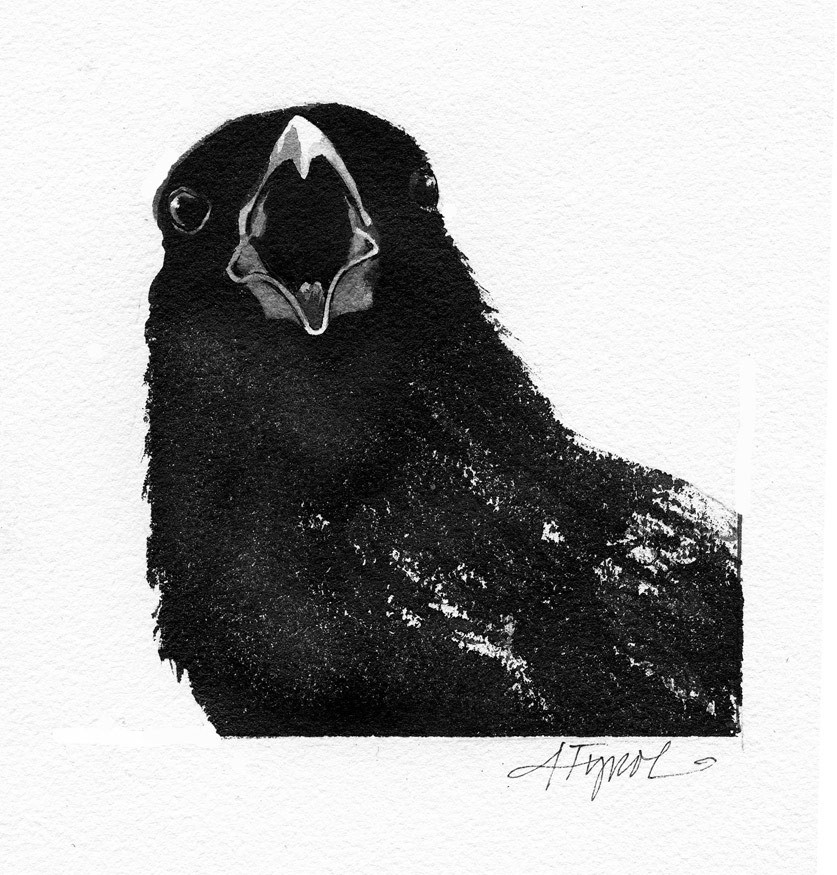
“Rats with wings,” says Marsha, a student in my field ornithology class, when I point to a pigeon flying overhead.
“Pigeons are very interesting birds,” I respond, trying to change her mind. “On a level or climbing flight, pigeons have been known to out-fly and out-maneuver the peregrine falcon. What’s more, they drink with their bills down, sucking up the water. Most birds must tip their heads with every sip to allow the water to run down their throats. And, unlike most birds, they come in a variety of colors and patterns.”
I hoped the barrage of fascinating facts would bring her around. “Did you know that pigeons feed their nestlings regurgitated ‘pigeon milk’, a liquid formed from cells sloughed off in the adult’s crop?” No luck. Marsha was unmoved.
So why do we hate pigeons?
Perhaps it is because they remind us so much of ourselves. Pigeons are messy and noisy and they gather in groups on city streets and parks. Just like us. Yet we respond by calling them pests, vermin, filthy – rats with wings. (By the way, the phrase “rats with wings” was coined by the character “Sandy”, played by Woody Allen in the 1980 movie “Stardust Memories.”)
Historically, the pigeon was not a common wild bird. Its “natural” habitat is cliff faces overlooking the ocean, not a common habitat. Pigeons didn’t become common until we built our cities and towns. Our buildings with their window ledges and rooftops and parking lots are their new “natural” habitat.
Ironically, many of the birds we love to hate are here in the New World because we brought them here. Pigeons came to America with the French in the early 1600s. Throughout the 1700s, the colonists raised them for food.
The house sparrow (a.k.a. English sparrow) was given a one-way ticket to America in the 1600s. Someone thought they would help control grain pests. Instead they became one, preferring seeds over bugs.
The European starling was brought here by Eugene Schieffelin, a New York drug wholesaler, who thought it would be really cool to have all the birds mentioned in Shakespeare flying around in American skies. In King Henry IV, Hotspur refers to the mimicry of the starling and says “Nay, I’ll have a starling shall be taught to speak nothing but ‘Mortimer’ ….” Schieffelin released 60 in Central Park in 1890 and another 40 in 1891. Unlike most of the Shakespearean birds he introduced, the starlings “took.” In a few years, they could be found from coast to coast.
There are plenty of other birds that we love to hate, but the infamous triumvirate is pigeons, house sparrows, and starlings. At least a dozen companies that currently advertise on the internet specialize in getting rid of these birds. The deterrents range from the innocuous, if ineffective, plastic owl, to sticky stuff and needle-like spikes to put on roosting ledges, to sound systems that broadcast distress calls and predator screams, to traps to capture and relocate the birds. When all that doesn’t work, there’s always poison.
About 10 years ago, the University of Vermont (UVM) poisoned birds in large numbers, birds that were fowling UVM’s model farm. Pigeons, starlings, and sparrows rained from the sky onto resident’s lawns and city sidewalks where they convulsed and died – the horrifying scenes sometimes attracting small crowds of children. UVM stopped the very next day.
When it comes to the birds that we love to hate, the crow stands out as another target for our antipathy. In both New Hampshire and Vermont, crows can be hunted during a spring and a fall season. There is no bag limit and hunters can take as many crows as they can carry. Despite us, or perhaps because of us, crows have prevailed. Our farms and towns, complete with fast food restaurants, litter, and garbage dumps, provide them with plenty of food, while our cars serve up a steady supply of roadside carrion.
When it comes to the birds we love to hate, we have rolled out the welcome mat. We provide plenty of food and housing and opportunity. That’s why they love us.

